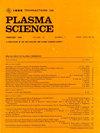Advances and Prospects of ECRH System on EAST
IF 1.5
4区 物理与天体物理
Q3 PHYSICS, FLUIDS & PLASMAS
引用次数: 0
Abstract
The Experimental Advanced Superconducting Tokamak (EAST) electron cyclotron resonance heating (ECRH) is an important auxiliary heating method, helping EAST achieve 1056 s of super I-mode discharge. There are currently four subsystems with six gyrotrons on EAST. At present, the EAST ECRH system can stably output 3.2-MW radio frequency (RF) power at 140 GHz with long pulses above 100 s (up to 1000 s) and can output 1.3-MW RF power at 105 GHz with long pulses above 100 s. Using ECRH as one of the main heating methods, EAST has made a series of experimental progress in recent years. In April 2023, the steady-state H mode plasma of 403 s was obtained. In the next two years, we plan to develop #5 and #6 systems. After the development, the total RF power can reach 5 MW at 140 GHz. In this article, the composition and operation of the EAST ECRH system were introduced, and the development advances of gyrotrons, transmission lines (TLs), and antennas were discussed. We analyzed the key characteristics related to the long-term operation instability of gyrotrons, which is an important reference for the operation of future gyrotrons.东岸ECRH系统研究进展与展望
实验先进超导托卡马克(EAST)电子回旋共振加热(ECRH)是一种重要的辅助加热方法,可以帮助EAST实现1056秒的超i模放电。目前在EAST上有四个子系统和六个回旋管。目前,EAST ECRH系统可稳定输出140 GHz长脉冲100 s以上的3.2 mw射频功率(最长可达1000 s),可输出105 GHz长脉冲100 s以上的1.3 mw射频功率。EAST采用ECRH作为主要加热方式之一,近年来取得了一系列实验进展。2023年4月,获得了403s稳态H模等离子体。在未来两年内,我们计划开发第5和第6个系统。经过开发,在140 GHz时总射频功率可达5 MW。本文介绍了EAST ECRH系统的组成和工作原理,讨论了回旋管、传输线和天线的发展进展。分析了与回旋管长期运行不稳定有关的关键特性,为今后回旋管的运行提供了重要参考。
本文章由计算机程序翻译,如有差异,请以英文原文为准。
求助全文
约1分钟内获得全文
求助全文
来源期刊

IEEE Transactions on Plasma Science
物理-物理:流体与等离子体
CiteScore
3.00
自引率
20.00%
发文量
538
审稿时长
3.8 months
期刊介绍:
The scope covers all aspects of the theory and application of plasma science. It includes the following areas: magnetohydrodynamics; thermionics and plasma diodes; basic plasma phenomena; gaseous electronics; microwave/plasma interaction; electron, ion, and plasma sources; space plasmas; intense electron and ion beams; laser-plasma interactions; plasma diagnostics; plasma chemistry and processing; solid-state plasmas; plasma heating; plasma for controlled fusion research; high energy density plasmas; industrial/commercial applications of plasma physics; plasma waves and instabilities; and high power microwave and submillimeter wave generation.
 求助内容:
求助内容: 应助结果提醒方式:
应助结果提醒方式:


